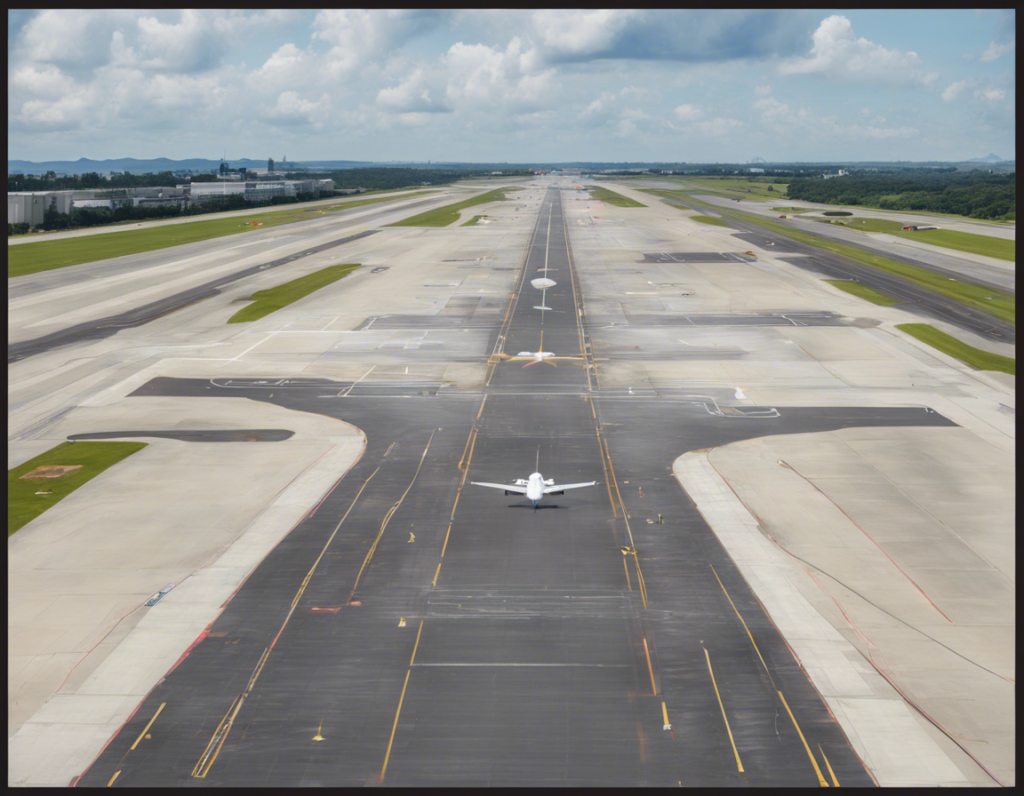
Have you ever wondered about the significance of aircraft runways and what the numbers painted at their ends signify? Runway 34 may appear to be just another number to the untrained eye, but in the world of aviation, it holds a crucial piece of information that is vital for pilots and air traffic controllers. Unraveling the mystery of Runway 34 not only sheds light on this specific designation but also offers insights into the intriguing world of aviation terminology and navigational aids.
Before delving into the specifics of Runway 34, it is essential to understand the basics of runway numbering. Every runway is oriented based on its magnetic heading, which is the direction the runway points towards in relation to magnetic north. The runway number is always rounded to the nearest ten and represents one-tenth of the magnetic heading when approaching from the opposite direction. For instance, a runway with a magnetic heading of 045 degrees is designated as Runway 04 when approached from one direction and Runway 22 when approached from the opposite direction.
In the case of Runway 34, the number 34 signifies that the runway is oriented at a magnetic heading of approximately 340 degrees. This means that aircraft taking off or landing on Runway 34 would be heading roughly towards the northwest. The opposite end of Runway 34 would be designated as Runway 16, reflecting a magnetic heading of approximately 160 degrees. These numbers play a crucial role in aiding pilots in identifying the correct runway for takeoff and landing and help air traffic controllers in routing and sequencing air traffic.
For pilots, understanding the significance of Runway 34 goes beyond just knowing the direction of the runway. It also involves considerations such as wind direction and speed, runway length, terrain, and obstacles in the vicinity of the runway. Wind plays a significant role in runway selection, as aircraft typically take off and land into the wind to maximize lift and improve performance. Pilots must also factor in the runway length available to ensure they have adequate distance to safely accelerate for takeoff or decelerate after landing.
In addition to runway numbering, pilots rely on a variety of navigation aids and instrument approaches to safely navigate to and from runways such as Runway 34. These include precision approaches such as Instrument Landing Systems (ILS) or Global Positioning System (GPS) approaches, which provide vertical and horizontal guidance to pilots during low-visibility conditions. Understanding these navigation aids and being proficient in conducting instrument approaches are essential skills for pilots operating in modern airspace systems.
Safety is paramount in aviation, and the designation of Runway 34 plays a crucial role in ensuring safe and efficient operations at airports around the world. Pilots and air traffic controllers undergo rigorous training to understand runway numbering conventions and operational procedures to prevent runway incursions and ensure smooth traffic flow. Additionally, airport authorities implement runway markings, signage, and lighting systems to enhance visibility and guidance for pilots operating in various environmental conditions.
In conclusion, Runway 34 may seem like a simple numeric designation, but it embodies a wealth of information that is fundamental to aviation operations. By decoding the mystery of Runway 34 and understanding the significance of runway numbering, pilots and aviation enthusiasts can gain a deeper appreciation for the precision and coordination required in the world of aviation. Next time you see Runway 34 at an airport, remember the intricate details it represents and the complex system of navigation and safety measures that ensure the smooth flow of air traffic.
1. What does the number on a runway signify?
The number on a runway represents the rounded magnetic heading of the runway’s orientation. It helps pilots identify the direction of the runway for takeoff and landing.
2. Why do runways have different numbers at each end?
To account for aircraft approaching the runway from different directions, each end of the runway is assigned a different number based on its magnetic heading.
3. How do pilots determine which runway to use for takeoff and landing?
Pilots consider factors such as wind direction, runway length, obstacles, and operational considerations to select the most appropriate runway for their flight.
4. What are some common navigation aids used for runway approaches?
Navigation aids such as ILS, GPS approaches, VOR, and NDB provide guidance to pilots during instrument approaches to runways, especially in low-visibility conditions.
5. How do air traffic controllers use runway numbers to manage air traffic?
Air traffic controllers use runway numbers to route and sequence air traffic, issue clearances to pilots, and maintain safe separation between aircraft operating at the airport.
6. Are there specific regulations or standards for runway numbering?
Yes, runway numbering follows international standards established by aviation regulatory bodies to ensure consistency and safety in runway designations worldwide.
7. How do pilots train to understand runway numbering and operational procedures?
Pilots undergo training in navigation, air traffic control procedures, and airport operations to familiarize themselves with runway numbering conventions and safety protocols.
8. What role do runway markings and lighting play in enhancing runway visibility?
Runway markings and lighting provide visual cues to pilots for runway identification, alignment, and distance judgment, especially during nighttime or adverse weather conditions.
9. In what scenarios would pilots need to conduct instrument approaches to runways like Runway 34?
Instrument approaches are often used in low-visibility conditions, such as fog or heavy rain, where pilots rely on navigation aids and instruments to guide them to a safe landing on runways like Runway 34.
10. How does runway orientation impact aircraft performance during takeoff and landing?
Runway orientation affects aircraft performance by influencing factors like wind components, runway length available, terrain considerations, and obstacle clearance requirements, all of which can impact takeoff and landing operations.